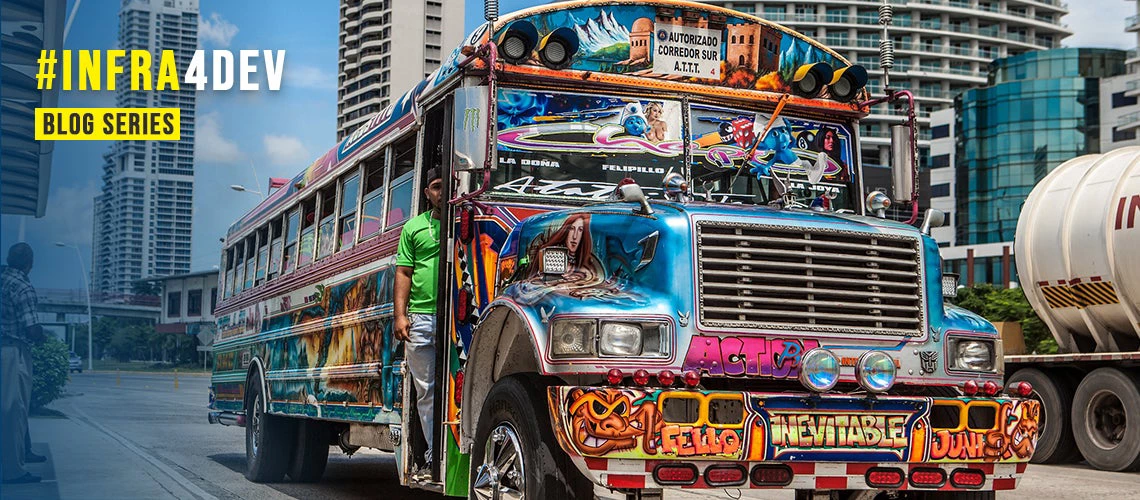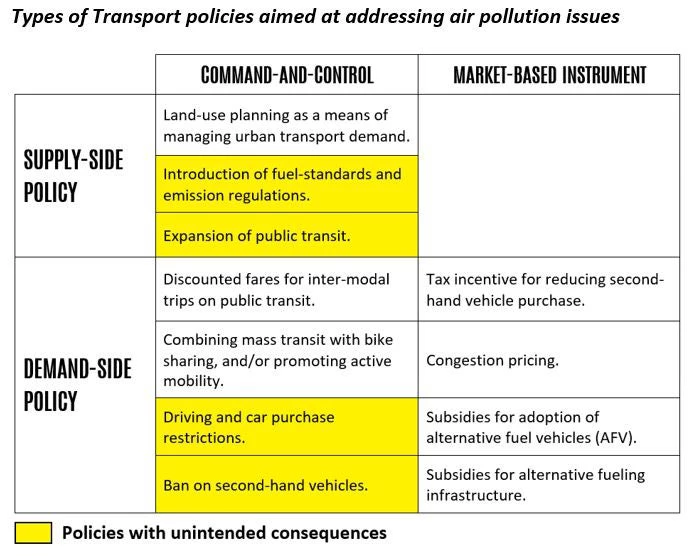 Urban transport is a growing source of air pollution | Image: Gerardo Pesantez / World Bank
Urban transport is a growing source of air pollution | Image: Gerardo Pesantez / World Bank
In fast-growing metropolitan regions in developing countries, more people are owning and using private motorized vehicles – like cars and motorcycles – to get around. As a result, urban transport is a growing contributor to air pollution.
Around the world, policymakers have tried a wide variety of measures to mitigate the environmental impact of urban passenger transport, often through regulations or economic incentives. But even though these policies are well-intentioned, they can have unintended consequences that undermine their results.
To improve our understanding of this issue, a recent research paper from the World Bank Infrastructure Chief Economist’s Office – Transport and the Environment: A Review of Empirical Literature – addresses three important related policy questions.
What policies are most effective at reducing the environmental impacts of urban transport?
The best solution for managing the potential tradeoff between mobility and air pollution is managing urban spaces. Creating compact cities that reduce distances to public transport, increase land density and increase land use diversity can get people out of private cars and onto mass transit. This approach can reduce local air pollution and urban congestion, as well as associated carbon emissions.
With rapid urbanization, policy makers in developing countries have a unique opportunity to integrate land-use planning and transport to encourage low-emission, low-motorized mobility. Policies that focus on compact, connected, and efficient forms of urban development can encourage people to shift from private motor vehicles to walking, cycling and public transport.
What are the risks that policies will have unintended consequences?
“Quick fix” policies that target certain behaviors in a vacuum without approaching transport systems as a whole can lead to unintended consequences. Complementary measures are often necessary to get the results policymakers are seeking.
For example, in Mexico City, restrictions that banned drivers from using their vehicles one weekday per week unexpectedly led to a deterioration in air quality. The policy inadvertently incentivized people to buy a second vehicle, which tended to be older and dirtier than the first.
By contrast, in Beijing, every-other-day driving restrictions led to a 19% reduction in air pollution, and one-day-a-week restrictions led to a 7% reduction. In this case, commuters turned to public transit rather than second vehicles. Complementary policies made this possible, including a quota on vehicle purchases, restrictions on the sales of used vehicles that failed to meet certain tailpipe emission standards, and increased investments in the public transit system.
In general, market-based policies are more cost-effective than command-and-control approaches in addressing the externalities associated with transport. For example, fuel-economy standards - which require vehicle manufacturers to improve fleet-wide fuel efficiency and provide a minimum level of alternative fuel vehicles - are less efficient than gasoline taxes in reducing energy consumption. For example, fuel content regulation did not improve air quality in the United States. This is because refiners chose to target pollutants that are relatively cheap to remove from gasoline which coincidently are also less harmful to air quality.
How relevant are conclusions from policy analysis in OECD countries to the developing world?
Caution is warranted in generalizing the findings from one location to another – particularly from the experiences of higher-income to lower-income countries. The effectiveness of policies that promote public transport, for instance, are highly dependent on local factors such as population density, motorization rates, and existing public transit networks, including the extent of the informal sector.
Policies that seek to develop the transport sector in ways that meet rising demand and safeguard the environment and human health can have strikingly different results depending on where and how they are implemented. Some policies can even inadvertently exacerbate the traffic and pollution they seek to mitigate. Complementary policies are crucial to minimizing environmental impact and maximizing the benefits for citizens.
#Infra4Dev is a blog series that showcase recent World Bank economic research to explore how Infrastructure is critical for development.
RELATED
How can we explain the rise in transport emissions… and what can we do about it?







Join the Conversation